I haven’t had a birthday party in the longest time, but turning thirty seemed like just the occasion I needed to spend the weekend cooking some delicious Vietnamese food and having a few of our friends over. Plus, Dean and I both have March birthdays, so we had double the reason to throw a party! I thought I’d keep things simple by setting up a DIY banh mi bar with all the fixings, but we ended up adding a couple extra items to the menu, including a pomelo papaya salad, lemongrass pork skewers, and a peppery lime chicken.

I was so pleased to find a copy of Andrea Nguyen’s The Banh Mi Handbook at my local library the week before the party (I have to add that the city of Redlands’ public library has the THE BEST cookbook collection that I have EVER seen at any of my local libraries. Two full rows of the newest cookbooks out there! And it’s super cute, to boot.). I ended up using many of her recipes for our party, including the quick pork pate, grilled pork skewers, and the Hanoi chicken. Here’s what our entire menu looked like:
DIY Banhi Mi Bar
Meats:
Fried cha (Vietnamese ham)
Cha with peppercorns
Garlic cha
Vietnamese headcheese
Veggies:
Pickled carrots & daikon (bought pre-made at the local Viet store)
Cucumber
Jalapeno
Cilantro
Spreads & Condiments:
Homemade mayo
Pate (used the quick recipe from The Banh Mi Handbook, which just added a few ingredients to a Farmer John’s pork liverwurst)
Maggi seasoning sauce
Sriracha
Hoisin sauce
Red Boat fish sauce
Other Foods
Grilled lemongrass pork skewers
Hanoi chicken (lime & pepper)
Chicken chao (rice soup)
Green papaya and pomelo salad with shrimp, served with shrimp chips
Cha gio (spring rolls)
Dessert
Coconut cassava cake
Mango sticky rice
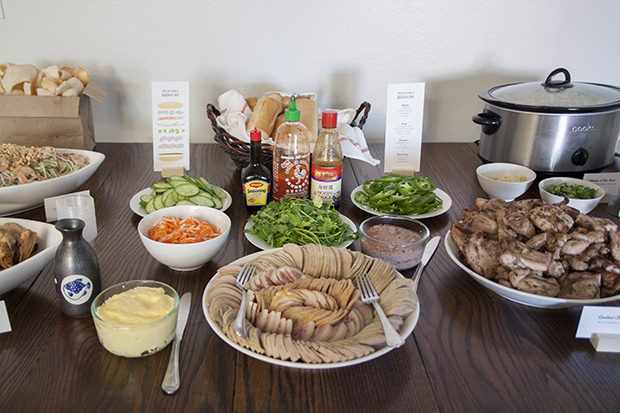
This was my first time making the pomelo papaya salad, which I’d been meaning to try ever since ordering it at Garlic & Chives in Garden Grove. We tried this Vietnamese/Asian Fusion bistro a couple months back, and I just loved their extensive menu, especially their inclusion of more Vietnamese “street food” type offerings like various shellfish dishes, a variety of tasty salads, and more traditional entrees like bo luc lac (shaken beef) and hot pots. They also have an awesome fried salmon belly appetizer that is worth trying!
Here’s the recipe I ended up using for the pomelo papaya salad:
Pomelo Papaya Salad
serves 6-8
2Â pomelos, peeled and separated into bite-sized segments
1 Ruby red grapefruit, peeled and separated into bite-sized segments (you can omit this, but I thought it added a lovely color to the salad)
1 bunch mint leaves, leaves washed and picked off
1 green papaya, shredded
1/2 lb. cooked shrimp, butterflied
fried shallots
crushed peanuts
nuoc cham dressing, to taste
shrimp chips
This salad comes together really quickly if you have a Vietnamese grocery store close by that sells pre-shredded green papaya. Otherwise, it takes a little more time for the prep. Also, feel free to add in/substitute other Vietnamese herbs if you don’t happen to have mint on hand. The shrimp can be swapped out with pork/pork belly slices, or it can be left out entirely.
Fry the shrimp chips (find directions here if you need them) and set aside for accompanying the salad. Combine all the ingredients together except the shallots and peanuts. The nuoc cham dressing can be mixed in, or you can have your guests dress the salad themselves. Garnish at the end with fried shallots and crushed peanuts. Serve with shrimp chips immediately.

I couldn’t resist making some fun signs and favors for the party. I made a graphic for the banh mi bar, which I turned into little bookmarks for all our guests. I also added in a pho postcard and some pho spices to keep with the Vietnamese food theme. I have a couple extras left over from the party that I’d love to give away to a few of our readers. If you’d like one, please send us an email with your name and mailing address, and I’ll send one your way!
Also, if you’d like to throw your own party with a DIY banh mi bar, I’ve turned my banh mi graphic into a free printable that you can download right here. Please send us pictures of your parties or tag us on Instagram (@rhuynh, @julie1wan)! We’d love to hear from you.

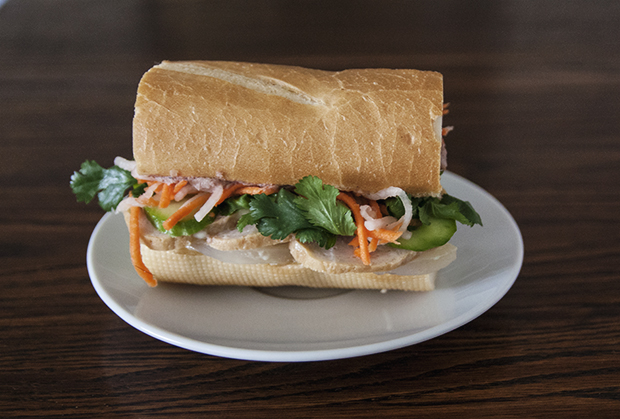
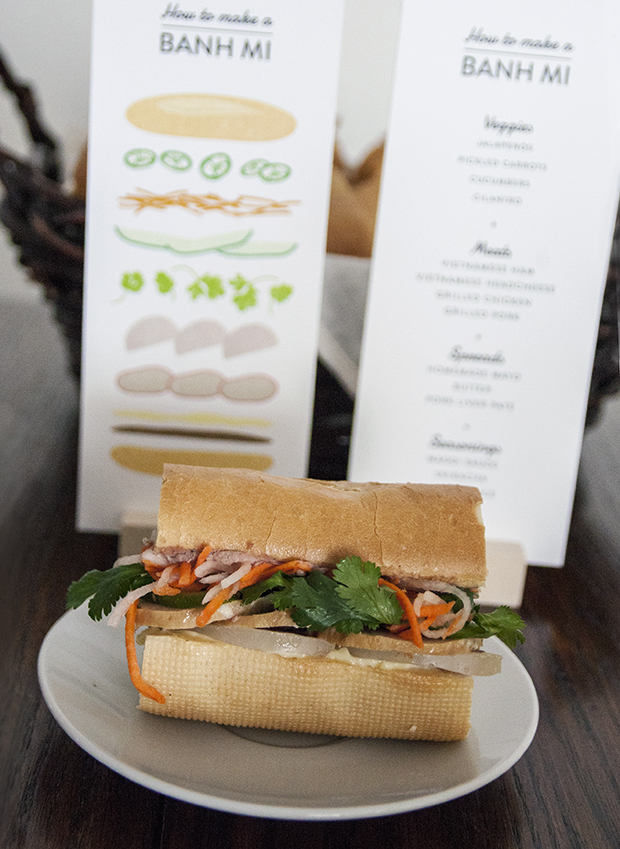
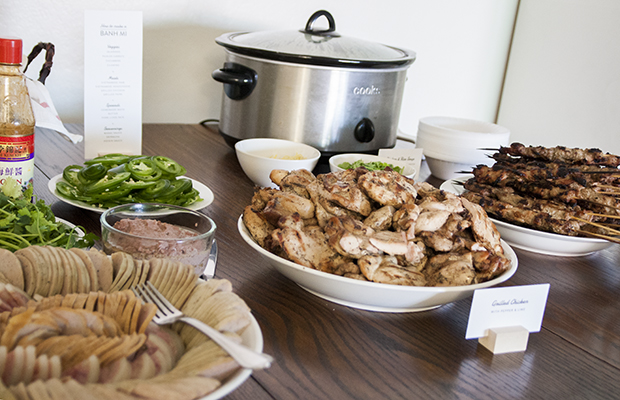
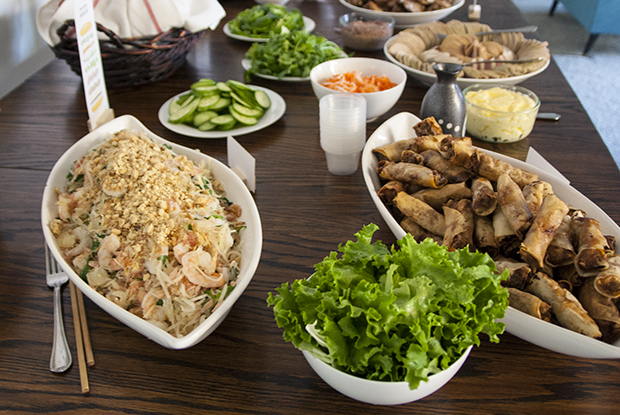
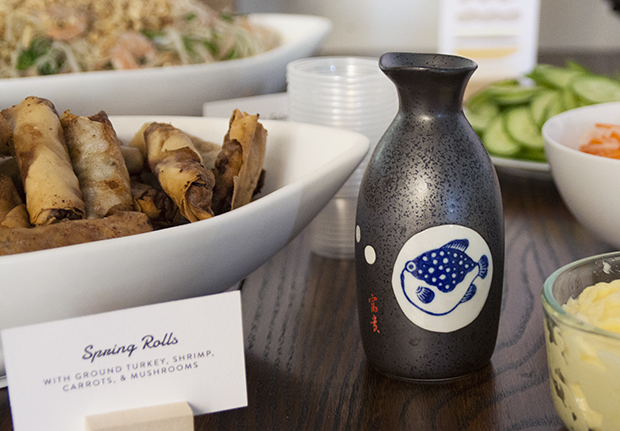
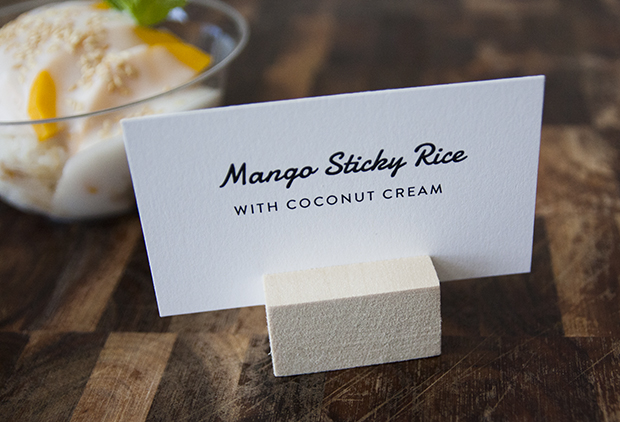
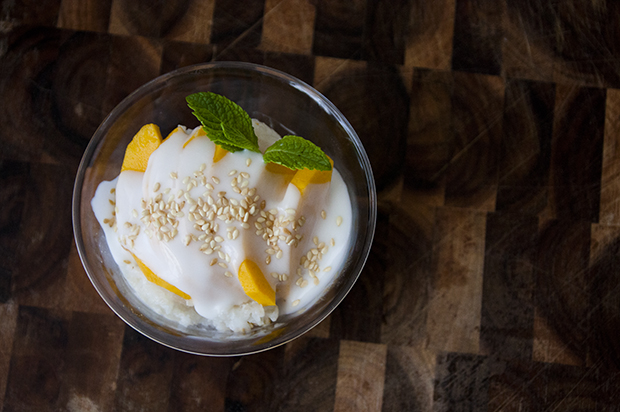
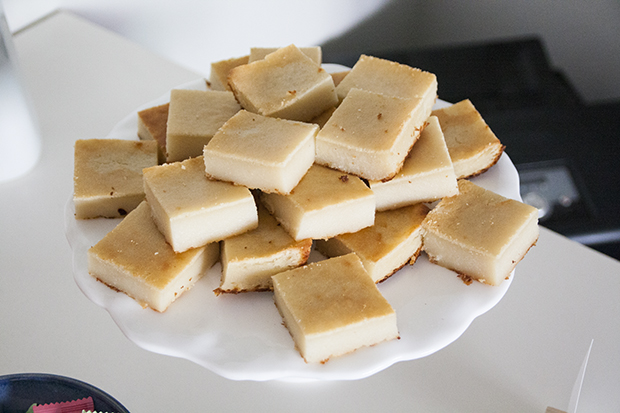
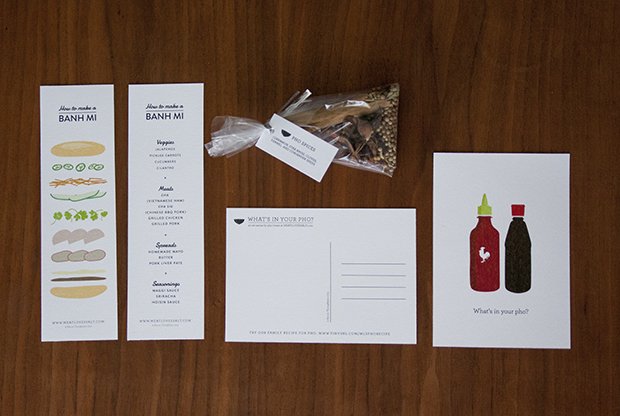
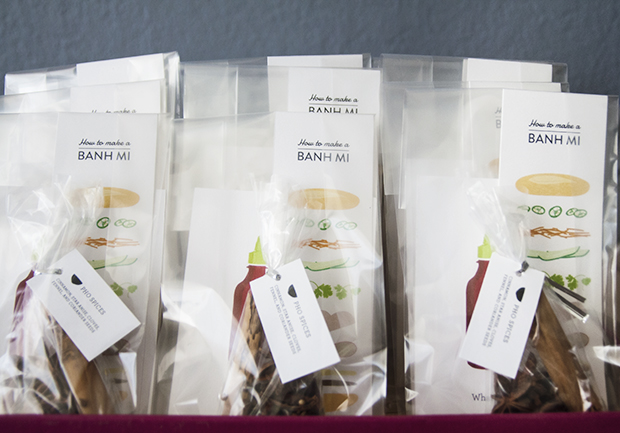
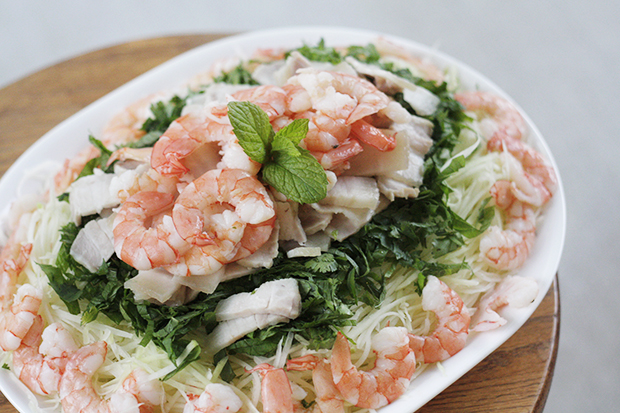

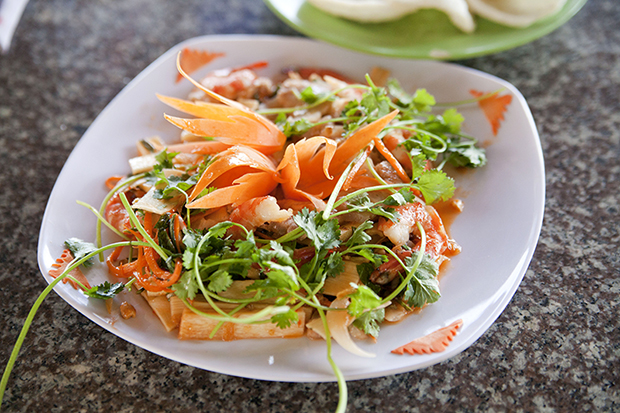
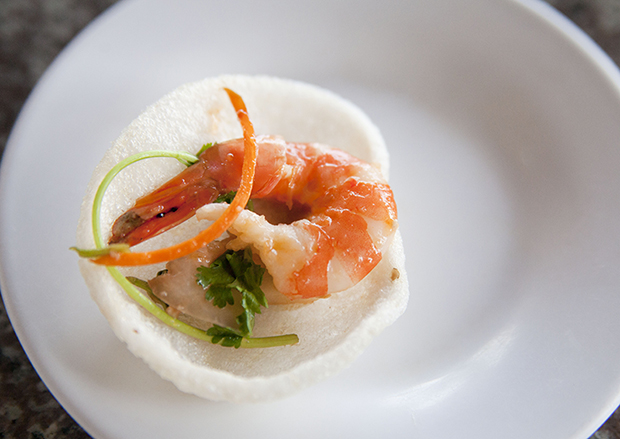
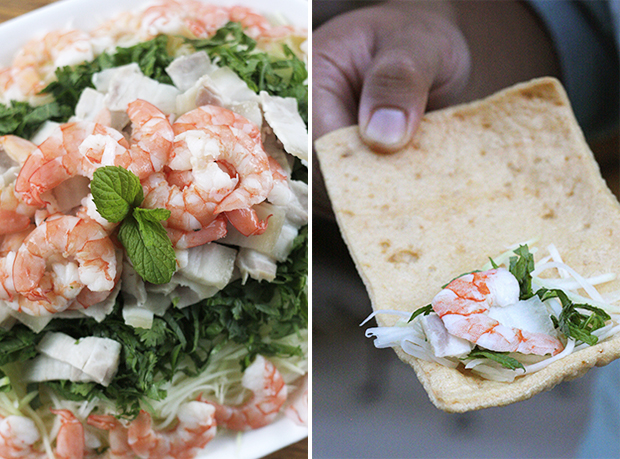
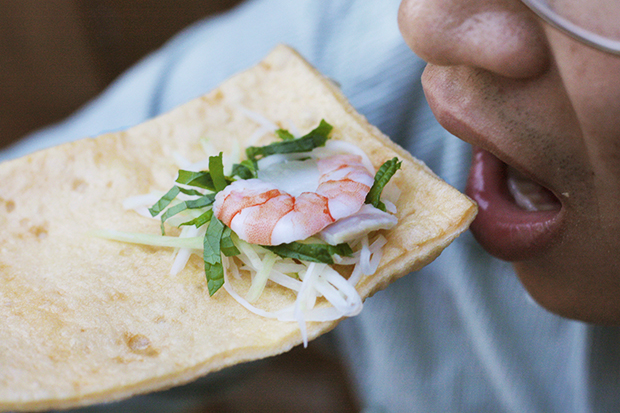
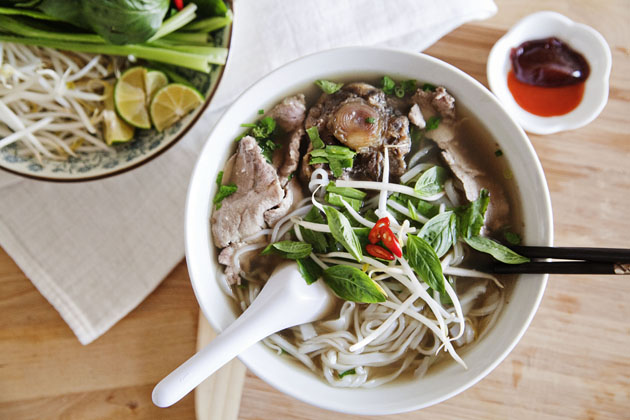
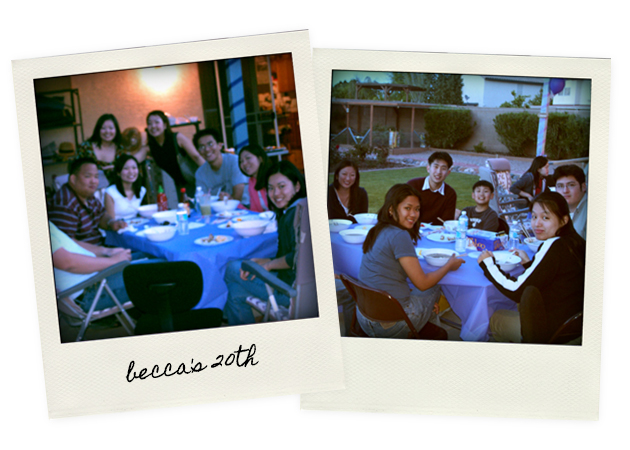
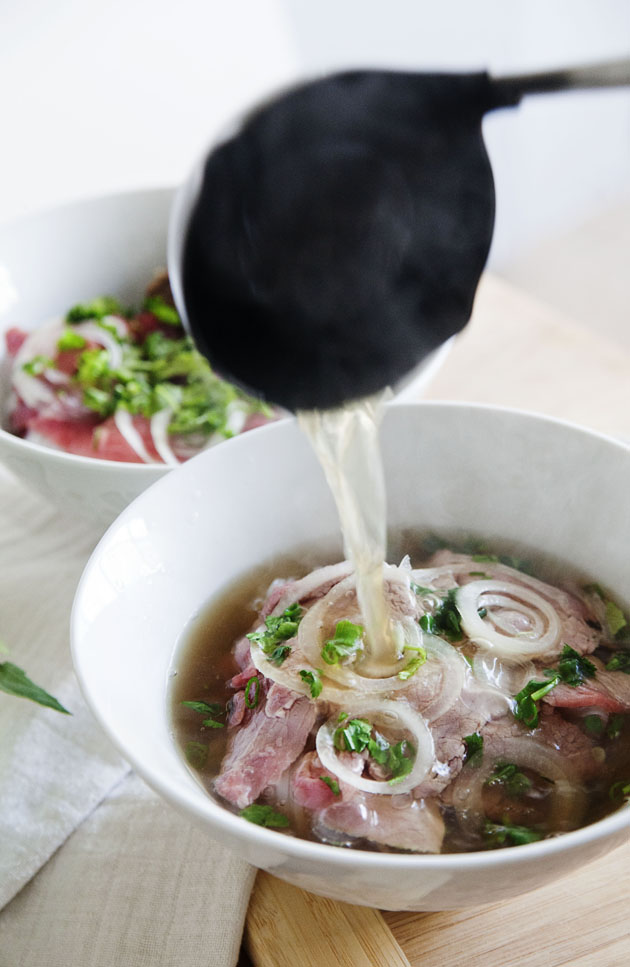




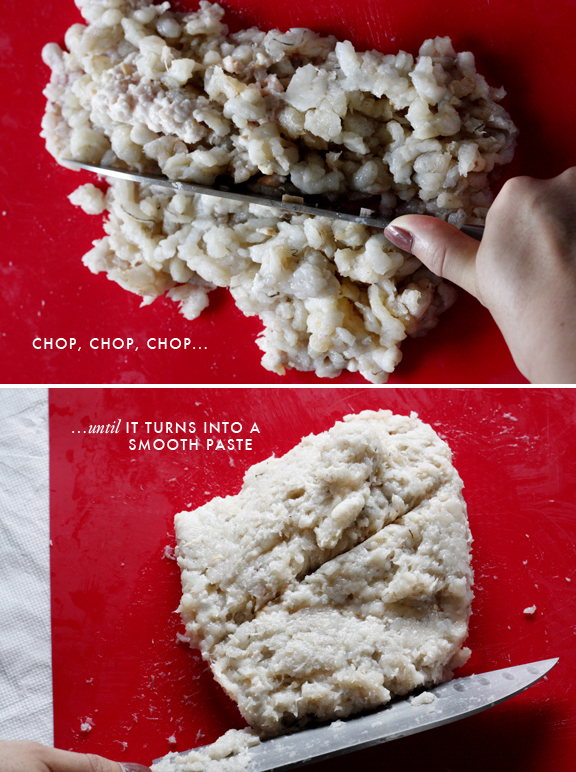















Connect with us